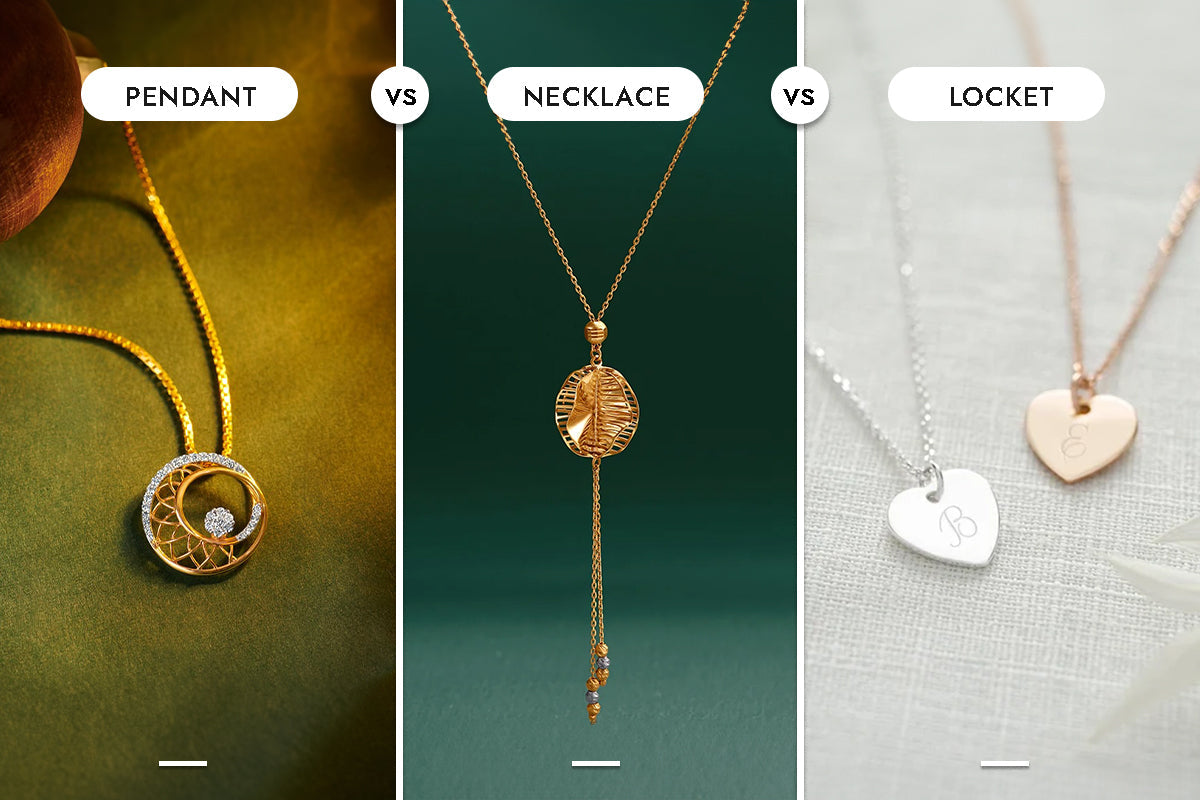News

News
The difference between a Pendant Vs a Necklace and Vs Locket
by Arrmas ae on Jan 26, 2025
Understanding the distinctions between necklaces, pendants, and lockets can help you choose the perfect piece of jewelry for any occasion. Here's a concise overview:
Necklace: A necklace is an ornamental chain or string worn around the neck, often adorned with decorative elements such as beads, gemstones, or charms. It serves as a standalone piece of jewelry that enhances the wearer's appearance.
Pendant: A pendant is a decorative item designed to hang from a chain, cord, or necklace. It can feature various designs, including gemstones, symbols, or personalized engravings, adding a focal point to the necklace.
Locket: A locket is a specific type of pendant that opens to reveal a small compartment inside. Traditionally, lockets hold sentimental items like photographs or tiny mementos, allowing the wearer to keep cherished memories close.
In summary, while all lockets are pendants, not all pendants are lockets. A necklace refers to the entire piece worn around the neck, which may feature a pendant or locket as its centerpiece.
News
An Expert Guide to Choosing the Perfect Watch for Women
by Arrmas ae on Jan 03, 2025
Choosing the perfect watch for a woman involves balancing functionality with personal style. Key factors to consider include her style preferences (classic, modern, or lifestyle-oriented), wrist size and case shape, material (metals and straps), and color compatibility with her wardrobe and skin tone. Additionally, decide on the movement type—quartz, mechanical, or automatic—based on her needs and appreciation for craftsmanship. Set a budget that aligns with her tastes, from affordable brands to luxury options, and consider extra features like water resistance or complications for added functionality. A thoughtful selection ensures a timeless accessory she'll cherish.
News
by Arrmas ae on Dec 03, 2024
Gold purity is measured in karats (k), indicating the percentage of pure gold in an alloy. The higher the karat number, the purer the gold. Here’s a breakdown of each purity level and the differences:
24 Karat (24k)
Purity: 99.9% pure gold (24 parts gold, 0 parts other metals) Characteristics: The purest form of gold; it's soft, bright yellow, and more malleable. Uses: Generally used in high-value investment pieces rather than in jewelry due to its softness, making it prone to scratches and bending.
22 Karat (22k)
Purity: 91.6% pure gold (22 parts gold, 2 parts other metals like silver or copper) Characteristics: Slightly harder than 24k due to added metals; has a rich yellow color but is still relatively soft. Uses: Common in high-quality jewelry in countries like India, but less durable than lower-karat gold. Better suited for intricate designs than 24k but still requires careful handling.
21 Karat (21k)
Purity: 87.5% pure gold (21 parts gold, 3 parts other metals) Characteristics: Even more durable than 22k and less prone to wear but still maintains a bright gold color. Uses: Popular in Middle Eastern jewelry; suitable for daily wear but may not hold intricate designs as well as higher-karat options.
18 Karat (18k)
Purity: 75% pure gold (18 parts gold, 6 parts other metals) Characteristics: More durable and harder than higher karats, with a slightly less intense yellow color due to the higher alloy content. Uses: Common for fine jewelry worldwide, particularly in engagement rings and watches, due to its durability and balance between purity and strength.
Summary
Higher-karat gold (24k, 22k) is closer to pure gold, softer, and often used for investment pieces, while lower-karat gold (21k, 18k) is more durable and suitable for everyday wear. The choice depends on the desired balance of purity, durability, and intended use.

